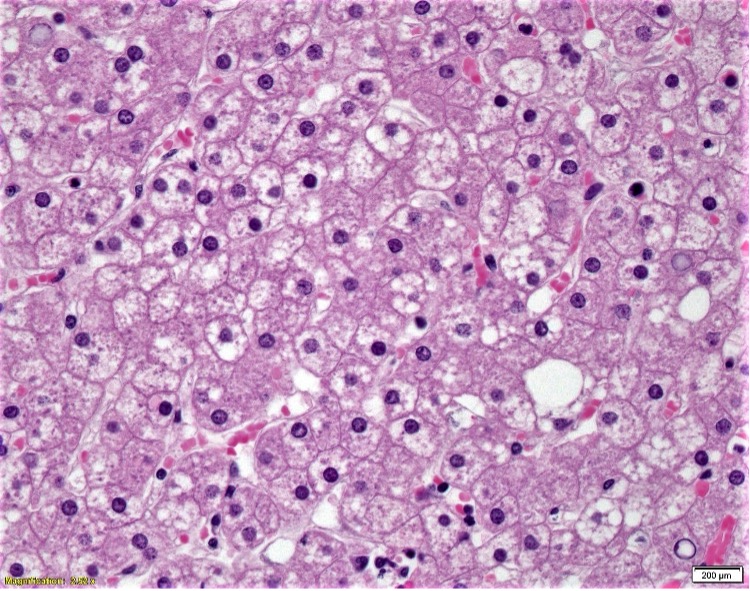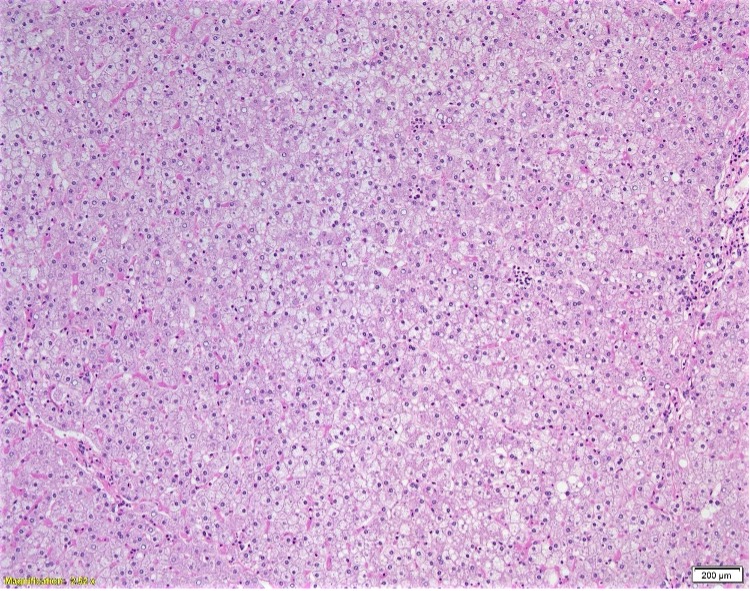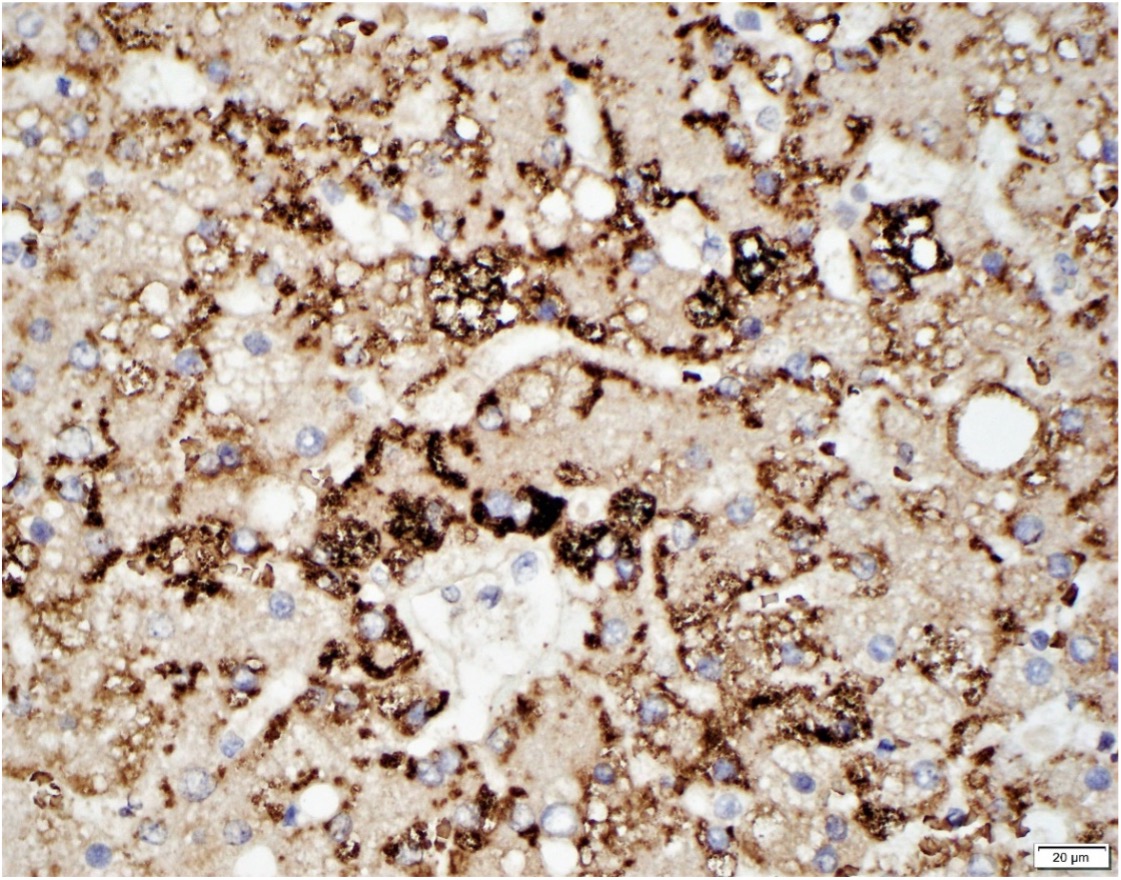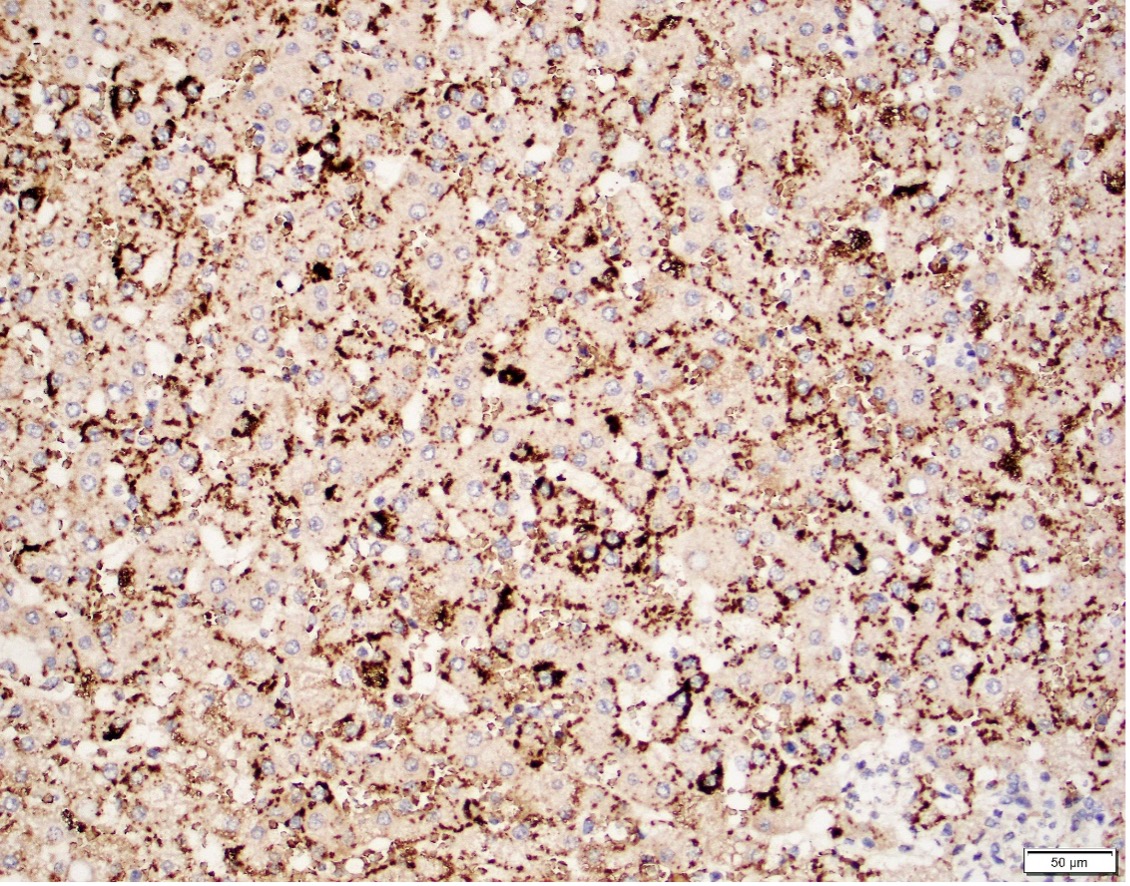Case History
7-year-old baby boy with acute N/V, diarrhea, and encephalopathy. He was diagnosed with influenza approximately two weeks earlier per the clinical history and was on medication to lower his fever. Subsequently, hepatomegaly was found. Liver biopsy is shown below:


What is the diagnosis?
A. Genetic mitochondrial disorder
B. Drug-induced liver injury
C. Reye's syndrome
D. Hepatic glycogenosis
Answer: C. Reye's Syndrome
Discussion
In the liver biopsy shown, the most prominent finding is diffuse microvesicular steatosis. Microvesicular steatosis is characterized by hepatocytes with small lipid vesicles, giving the impression of foamy cytoplasm. The nucleus is usually centrally located. In comparison, in macrovesicular steatosis the nucleus is eccentrically located due to displacement by a single large lipid vesicle. The lipid droplets of steatosis can be difficult to distinguish from glycogen. Intracytoplasmic glycogen causes hepatocytes to become enlarged with pale cytoplasm1. Typically cytoplasmic membranes are prominent. Microvesicular steatosis can be differentiated from glycogen accumulation utilized PAS and PASD stains. Additionally, the lipid droplets in microvesicular steatosis will have positive adpophilin staining (See pictures below).


The differential diagnosis of microvesicular steatosis includes genetic mitochondrial disorders, drug-induced liver injury, Reye’s syndrome, acute fatty liver of pregnancy, and advanced non-alcoholic fatty liver disease.2 Due to the broad differential diagnosis, clinical correlation is essential. In the case presented, the patient was recently diagnosed with influenza. Recent viral infections and aspirin usage are associated with Reye’s syndrome (Answer C). Reye’s syndrome, first described in 1963 by Australian pathologists R.D.K. Reye, is a rare diagnosis, primarily presenting in young children as concomitant encephalopathy and liver failure.3 The mortality rate is estimated to be around 20%. The main histopathologic findings is microvesicular steatosis. Genetic mitochondrial disorders affecting B-oxidation may look identical on liver biopsy to that of Reye’s syndrome. However, patient’s typically present much earlier in life. The most common of such disorders is medium-chain acyl-CoA dehydrogenase (MCAD) deficiency. Drug-induced liver injury can also give predominant microvesicular steatosis. Valproic acid, amineptine, and amidarone have all been associated.4 Given the patient’s age and lack of previous medical diagnoses, drug-induced liver injury is unlikely.
Sources
1Torbenson, Michael MD*; Chen, Yunn-Yi MD, PhD†; Brunt, Elizabeth MD‡; Cummings, Oscar W. MD§; Gottfried, Marcia MD⊥; Jakate, Shriram MD, FRCPath¶; Liu, Yao-Chang MD♯; Yeh, Matthew M. MD, PhD**; Ferrell, Linda MD†. Glycogenic Hepatopathy: An Underrecognized Hepatic Complication of Diabetes Mellitus. The American Journal of Surgical Pathology 30(4):p 508-513, April 2006.
2Kwong S, Meyerson C, Zheng W, Kassardjian A, Stanzione N, Zhang K, Wang HL. Acute hepatitis and acute liver failure: Pathologic diagnosis and differential diagnosis. Semin Diagn Pathol. 2019 Nov;36(6):404-414. doi: 10.1053/j.semdp.2019.07.005. Epub 2019 Jul 24. PMID: 31405537.
3Chapman J, Arnold JK. Reye Syndrome. [Updated 2022 Jul 4]. In: StatPearls [Internet]. Treasure Island (FL): StatPearls Publishing; 2022 Jan-. Available from: https://www.ncbi.nlm.nih.gov/books/NBK526101/
4Fromenty B, Pessayre D. Impaired mitochondrial function in microvesicular steatosis. Effects of drugs, ethanol, hormones and cytokines. J Hepatol. 1997;26 Suppl 2:43-53. doi: 10.1016/s0168-8278(97)80496-5. PMID: 9204409.
Contributed by Sameer Al Diffalha, M.D., Associate Professor, Anatomic Pathology